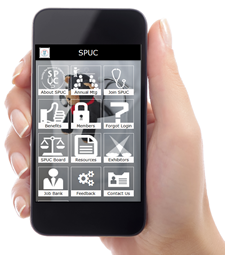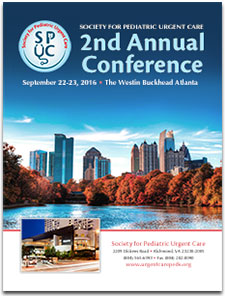Case Report
Dengue Fever in Seattle?
Karen Kilian, MN, RN, ARNP
Seattle Children's Hospital Urgent Care
Fifteen year old female presents to Urgent Care (UC) with Chief Complaint of “achy.” The patient and her family had recently returned from a trip to Hawaii, having stayed on the Big Island (also known as the island of Hawaii) in the areas of Hilo and Kona. They literally got off the plane six hours prior to arrival at UC. Her symptoms started about 36 hours prior to arrival back in Seattle with general malaise, decreased appetite, mild sore throat and headache. Patient denies any current cold symptoms, no vomiting or diarrhea. She did have a cold prior to travel, but those symptoms had resolved. A fever with a Tmax of 102 was noted at home on the day of presentation. Patient uses tampons during her periods, but her LMP is nearly finished with no tampon in place. No known sick contacts.
The mother voices her concern about the child having either a sinus infection (given the cold symptoms two weeks prior) or the possibility of Dengue Fever. When they were in Hawaii, the news was full of reports about a Dengue Fever outbreak. Her mother reports they never saw any mosquitos during their visit, but were aware that was the vector for the illness. Patient did visit a reserve/park while in Hawaii that was stated to be a place where people had presumably become infected with Dengue Fever. Initial vital signs: Temp 39.1 HR 114 RR 16 BP 94/42. She was ill-appearing. Patient shows clear TM’s, mildly erythematous oropharynx without exudate, clear lung fields without increased work of breathing, abdomen soft with active bowel tones. She was warm and well perfused. No rashes were noted.
The provider (a Nurse Practitioner) who was caring for this patient has spent time in Zambia, where Dengue Fever is present. She was also concerned about the possibility of this illness. The patient was tachycardic (though, not out of proportion to the fever), febrile and with a relatively low blood pressure for her age.
Work-up commenced with giving acetaminophen for the fever, placement of an IV; rapid strep, CRP, CBC, blood culture and coagulation studies were sent. The patient was given one liter of normal saline. The provider looked up information about Dengue Fever on the website of the Hawaiian Dept of Public Health; and as a result, also sent blood to test for Dengue Fever antibodies. After the liter of NS, her heart rate came down to 86, bp was 95/50. The patient was then transferred to the Emergency Department for further evaluation.
Initial evaluation in the ED shows a teenager who was a bit anxious but in no acute distress. Lungs remained clear to auscultation, no overt rashes were noted but she now had a rather flushed appearance to her skin. She was warm and well perfused, however her peripheral pulses were described as ’bounding.’ She also now had a grade 2/6 holosystolic murmur at the ULSB. Lab results are as follows:
| Sodium | 145 |
Potassium |
3.8 |
Chloride |
100 |
C02 |
21 |
BUN |
13 |
Creatinine |
0.7 |
Glucose |
135 |
WBC |
5.4 |
HCT |
39 |
PT |
13.7 |
PTT |
30 |
INR |
1 |
Mono spot was negative, EBV titers, blood culture pending and Dengue Antibodies were pending. A rapid respiratory viral PCR as well as rapid strep (and subsequent throat culture) were negative. Differential diagnosis included: Dengue Fever, Mononucleosis, bacterial sepsis, toxic shock syndrome or other infectious causes.
The patient received two more liters of normal saline as well as IV Clindamycin and Vancomycin due to concern about possible sepsis and she was admitted to the hospital for observation and continued evaluation. Infectious Disease was consulted due to the initial concern about Dengue Fever. Their exam showed healing areas of mosquito bites. ID was concerned about the possibility of Dengue as well and recommended repeating Dengue Antibody studies as well as sending blood for Dengue PCR as the antibody titers may not become positive until more than four days into the illness. The initial studies drawn in UC were on day two-three of illness.
The patient continued to receive supportive care in the hospital with close observation and monitoring. Blood cultures were negative at 48 hours and antibiotics were discontinued. The patient improved with time and was discharged home three days later.
The initial Dengue studies revealed the IgG to be 0.45 with the IgM resulted at 0.2 which were both negative. Repeat tests drawn three days later showed an IgG of 0.72 and IgM of 1.38 which was termed positive for infection with the Dengue virus. The Dengue PCR test was positive for Dengue virus types one and three (there are four types). The following information is from the Hawaiian Dept. of Public Health:
The Hawaii Department of Health (HDOH) is investigating a cluster of locally-acquired cases of dengue fever on Hawaii Island (the Big Island). Dengue is not endemic to Hawaii. However, it is intermittently imported from endemic areas by infected travelers. This is the first cluster of locally-acquired dengue fever since the 2011 outbreak on Oahu. The Big Island and the rest of Hawaii remain safe destinations for visitors and residents. As of February 11, 2016: Of the confirmed cases, 230 are Hawaii Island residents and 24 are visitors. 208 cases have been adults; 46 have been children (<18 years of age). Onset of illness has ranged between 9/11/15 – 2/6/16.
Dengue fever is a viral illness spread by mosquitoes. There are four closely related dengue viruses (DENV 1, DENV 2, DENV 3, and DENV 4). These viruses are transmitted to humans by the bite of an infected mosquito. The disease occurs mainly in tropical Asia, Africa, the Caribbean, and the South Pacific. It is most common during the rainy season in areas infested with infected mosquitoes. Sometimes, persons arriving from other countries may enter the United States with dengue fever and infect local mosquitoes, as happened in Hawaii in 2001 and 2011. The current 2015 Hawaii Island outbreak involves DENV serotype one.
The symptoms of dengue fever include sudden onset of fever; severe headaches; eye, joint, and muscle pain; and rash. The rash typically appears on the hands, arms, legs and feet three to four days after the fever begins. Minor bleeding problems can also occur. The symptoms usually go away completely within one to two weeks. Sometimes, people with dengue fever have blood clotting problems. When this happens, the illness is called severe dengue. Severe dengue is a very serious illness with abnormal bleeding and very low blood pressure (shock).
The symptoms usually start five to six days after being bitten by infected mosquitoes, but the onset can range from 2–15 days.
There is no specific treatment for dengue fever. Bed rest and acetaminophen (Tylenol) to treat fever and pain are recommended. Aspirin and NSAIDS (ibuprofen, naproxen) are NOT recommended as they can make bleeding problems worse. There is currently no vaccine for dengue fever. Individuals with dengue should seek out medical care.
http://health.hawaii.gov/docd/dengue-outbreak-2015/
With todays ability to travel all over the world, people will arrive in the US with a disease we have not seen. When taking a health history for an acute patient visit, always ask about the patient’s travel history as it may provide clues to the etiology of their symptoms.
In this situation, the family provided their concerns and the provider caring for this patient was astute enough to realize Dengue Fever was a true possibility. While treatment is supportive care, this patient required IV fluids for relative hypotension as well as admission to the hospital. Prompt recognition of illness, supportive care and close observation was imperative to her full recovery.



